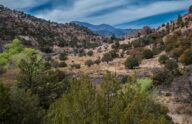In 1993, the U.S. Fish and Wildlife Service listed the coastal California gnatcatcher as a threatened subspecies of the overall gnatcatcher population. The Service estimated this listing to cost nearly $1 billion in negative economic impacts through 2025 and this does not even include the value of public and private land committed to conservation reserves where property owners and others are prohibited from any productive use of land designated as the birds’ critical habitat. The federal government has set aside over 625,000 acres for the gnatcatcher throughout Southern California and demanded that local governments spend extraordinary amounts of time and resources developing resource management and conservation programs to benefit the gnatcatcher.
As it turns out, the listing was wholly unnecessary. A 2013 study of the California gnatcatcher’s mitochondrial DNA shows it to be indistinguishable from the millions of other gnatcatchers present in Baja California. In short, the coastal California gnatcatcher is a common bird, not endangered or threatened in any way. Because the original listing was based on erroneous information, the Service should delist the gnatcatcher and lift the restrictions on the bird and its environs.
PLF represented interested property rights groups on a petition to delist the gnatcatcher based on the 2013 study that shows ESA protection was improperly established and should be terminated immediately. The Service nonetheless denied the petition and PLF sued on behalf of the Center for Environmental Science, Accuracy and Reliability; the Coalition of Labor, Agriculture & Business of Santa Barbara County; and other landowner and developer organizations.
What’s At Stake?
- California’s housing crisis—along with new findings of science—demand that onerous land use restrictions for the coastal California gnatcatcher be reconsidered. Those regulations rope off hundreds of thousands of acres from homebuilding and other needed development.
- New DNA findings by Dr. Robert Zink and other biologists indicate that California gnatcatchers are part of a healthy species that ranges all the way down to the southern tip of Baja, Mexico. Therefore, they don’t belong on the Endangered Species Act list.
- In rejecting the evidence for dropping the gnatcatcher from the ESA list, regulators used an agenda-driven process that lacked objectivity and transparency. On behalf of advocates for homebuilding, property rights, and sound science, PLF is suing to force the government to reconsider Dr. Zink’s findings—this time with a valid review.







